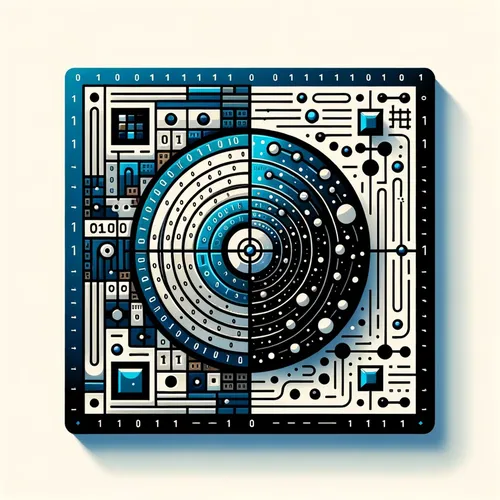Quantum Continents: Linking Noisy Chips for Scalable Computing | Quantum Bits Ep. 17
- Author
- Quiet. Please
- Published
- Fri 29 Aug 2025
- Episode Link
- https://www.spreaker.com/episode/quantum-continents-linking-noisy-chips-for-scalable-computing-quantum-bits-ep-17--67553933
This is your Quantum Bits: Beginner's Guide podcast.
I’m Leo, Learning Enhanced Operator, and let me tell you: these last few days in quantum computing have felt like lightning in a bottle—a flash of pure possibility, crackling through the global research community. Picture this: On August 26th, researchers at UC Riverside revealed a breakthrough for scaling quantum processors, one that finally loosens those suffocating requirements on hardware perfection. They simulated linking multiple, small quantum chips into a single **fault-tolerant quantum system**—even when the connections between chips were cluttered with ten times more noise than the chips themselves. For years, quantum engineers, myself included, imagined we’d need immaculate wires, flawless hardware, and pristine conditions to unite quantum processors. Now, Mohamed A. Shalby and his team have shown we can “connect chips we already have to create something much larger.” This is a seismic shift. We’re no longer just building quantum computers, we’re linking quantum islands into a continent[1].
Dramatic? Absolutely. Quantum error correction—especially the “surface code” used in these simulations—is like building a suspension bridge across a churning sea. Each modular chip is a sturdy pillar, and the noisy connections are the winds battering the cables. But, as UC Riverside proved, distributed error correction can still hold firm, allowing us to expand quantum systems long before all the hardware becomes ideal. This insight means budding quantum programmers are much closer to hands-on, scalable systems. Gone are the days of waiting for perfect qubits and flawless connections—we can prototype across distributed chips today, confidently deploying algorithms for chemistry, cryptography, and even genomics.
Speaking of genomics, Quantinuum’s collaboration with the Wellcome Sanger Institute pushes the frontier yet again. Their System Model H2 quantum processor recently calculated the most complex genomic structures ever attempted, leveraging quantum circuits that integrate both classical and quantum tensor networks. The ultimate goal? Encode and process an entire genome using quantum computation[6]. Imagine: mapping life itself with the ghostly grasp of quantum logic, probing structures too complex for classical computers to comprehend.
What’s the programming breakthrough making all this possible? *Guppy*, Quantinuum’s new quantum programming language, launched this week. It works with advanced hardware like Helios and the Selene emulator—fully open source, built for dynamic, measurement-dependent quantum protocols including error correction. Now, quantum software developers can actually code for next-generation distributed quantum systems—the kind enabled by UC Riverside’s modular breakthrough—and run logic that adapts with every experimental measurement[6].
It’s exhilarating: as quantum networks like Vietnam’s VNQuantum go live, more innovation is within reach, whether you’re a lone coder or part of a multinational team[1]. The pace can be dizzying, but the parallels are everywhere—global networks weaving together, like quantum entanglement, linking isolated entities into a collective intelligence.
Thank you for joining me on Quantum Bits: Beginner’s Guide. If you have questions or want a topic discussed on air, just email [email protected]. Subscribe so you never miss an episode, and remember: this has been a Quiet Please Production. For more, check out quietplease.ai.
For more http://www.quietplease.ai
Get the best deals https://amzn.to/3ODvOta
